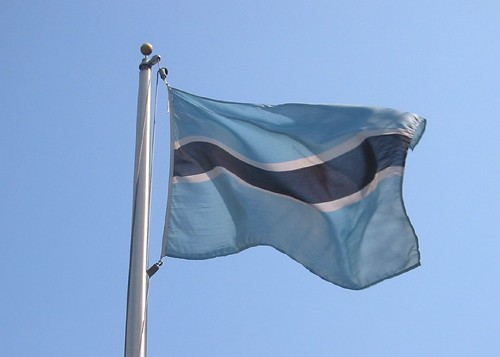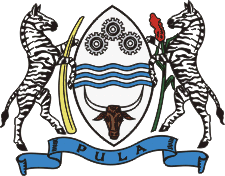 The Botswana flag against its most common backdrop--a cloudless sky.
The Botswana flag against its most common backdrop--a cloudless sky.
(farm1.static.flickr.com)
Like my home state of Texas, Botswana has big skies. Like the dusty West Texas skies of George W Bush fame, Botswana's skies rarely bring rain. A few months a year, known as the rainy season, it rains some and sometimes hard, but not enough to neglect watering the yard...unless you wish it to return to a dusty desertous patch of land where grass once grew. (This is how I found mine upon moving into my apartment). The rainy season corresponds roughly with summer, though seasonal references mean little here--leaves and snow do not fall in Botswana, and spring loses it's romance when it marks the departure and not the arrival of the things green and alive.
As I discuss in my first entry on this blog (called "Cloudseeding"), rain and it's absence define life in this dry country. The land is flat, the desert plant life small, and the buildings few, meaning that the horizon can sink no lower and the sky that pushes down upon its edges does not have to push too hard.
Unlike many African countries where I have been, here the national flag is often flown. It is my impression (having been here now only 10 months) that this reflects the nation' patriotism, and indeed the inhabitants of this land, while facing many challenges (HIV being one), have much to be proud of.
The blue on Botswana's flag represents water. The motto on the national Coat of Arms is "PULA", meaning "rain". The white-black-white bands on the flag represent the goal of racial harmony among Botswana's people, as well as the pluralist nature of the society here. They are inspired by the coat of the zebra, the national animal.






